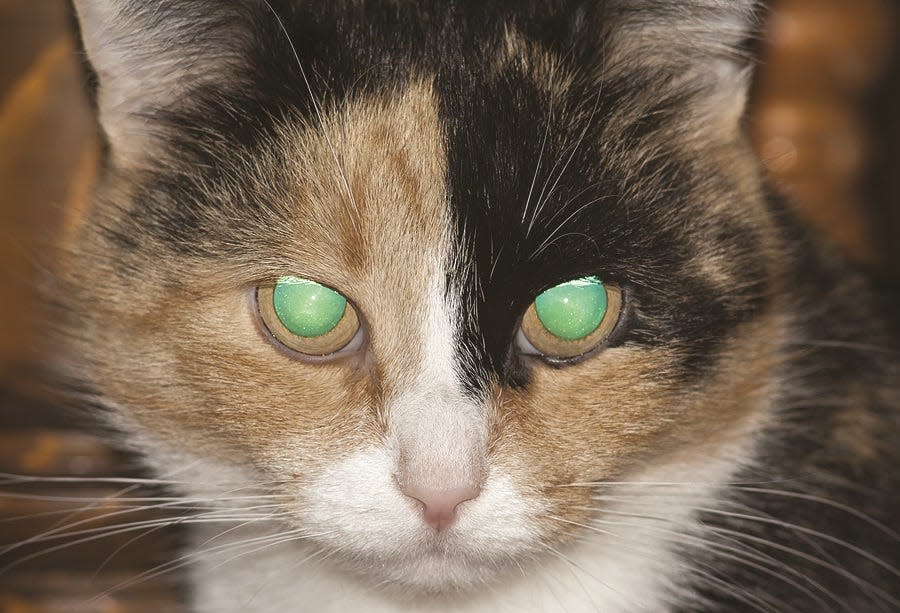Mysterious Felines: 7 things you may not know about your cat and could help win Scrabble
You don’t have to know much about cats to know they’re among the best companions you can have. But the more you know, the more you’ll enjoy their unique traits and entertaining company, and the more you’ll be amazed by the peculiarities people have ascribed to them over many millennia.
I’m a 43-year veteran veterinarian, a lifetime cat lover and the author of 23 books on dogs and cats. While I still continue to learn feline facts, tips and tactics, I’d like to share with you some things many of you might not know about your feline family members.

1. The cat walk. If you’ve ever watched dogs walk, you may have noticed that they alternate sides when they step. In other words, the right front paw steps forward at the same time the left rear paw does. Their natural gait is a trot. Cats move differently. They step with both left paws, then both right paws. Their natural gait is called a pace, and camels and giraffes are the only other animals with the pace as their natural gait.
2. Cat feces Rx. The ancient Romans believed feline feces had healing powers. They used a concoction of honey, cat dung, spices and fat to heal burns and wounds. The Romans also thought drinking from lead cups was a great idea, so I don’t recommend trying this ancient burn ointment at home.
3. A hairball can help you win at Scrabble. Cats are great self-groomers and have a very raspy tongue (I often joke that it feels like a caterpillar wearing golf shoes) that can pull out a lot of hair, which the cat then swallows. Hair is indigestible, so when it enters a cat’s stomach, it has two exits: up or out. When it comes up, it’s a hairball (though it actually looks more like a slimy cigar).
The scientific name for a hairball is trichobezoar: “tricho” from the Greek word thrix, meaning hair, and “bezoar” from the Arabic word bazahr or Persian word padzahr, both meaning antidote. Bezoar is a great Scrabble word — 17 points based on letters alone!
In early times, as far back as 1000 B.C. and continuing to the 11th century and beyond, trichobezoars were thought to have medicinal properties, especially for counteracting poisons as well as treating such diverse maladies as plague, dysentery, epilepsy and venomous bites. As with the aforementioned Roman remedy, I don’t recommend this treatment.
4. Why cats don’t need sunglasses. Cats are different than humans, dogs and most other animals in that the pupils of their eyes reduce to slits rather than tiny circles. Because the cat’s eyelids close at right angles to the vertical pupil, a cat can further reduce the amount of light entering the eye by bringing the eyelids closer and closer together. This works similar to the shutter on a vintage camera.
5. Who hears better? If you compare a human, dog and cat, the cat wins. Cats can hear nearly 3 times more frequencies than humans can. Technically, human hearing tops out at 20 kilohertz, a dog’s at 45 kHz, with cats at 80 kHz. Cats are able to hear a mouse walking 30 feet away or a bat in flight.
6. Do cats age seven years for every human year? No. In fact, dogs don’t either. A 1-yearold cat has reached full adult size and sexual maturity. This would be the equivalent of an 18-year-old human being. After the first year, a “four equals one” rule works pretty well. So a 10-year-old cat would be the equivalent of 54 human years: 18 (the first year) + 36 (4 x 9 years) = 54.
7. What are a cat’s whiskers for? A cat’s whiskers are deep-set, highly sensitive hairs called vibrissae (another great Scrabble word). These sensitive detection devices can perceive wind direction, help the cat gauge if they can fit through an opening and are important for body language signaling. If the whiskers are forward, the cat is friendly or curious. If they are pinned back, don’t approach or touch.
Do you have a pet question? Send it to askpetconnection@gmail.com or visit Facebook.com/DrMartyBecker. Pet Connection is produced by veterinarian Dr. Marty Becker, journalist Kim Campbell Thornton, and dog trainer/behavior consultant Mikkel Becker. ©2023 Andrews McMeel Syndication
This article originally appeared on South Bend Tribune: Pet Connection: 7 things you may not know about your feline friend

